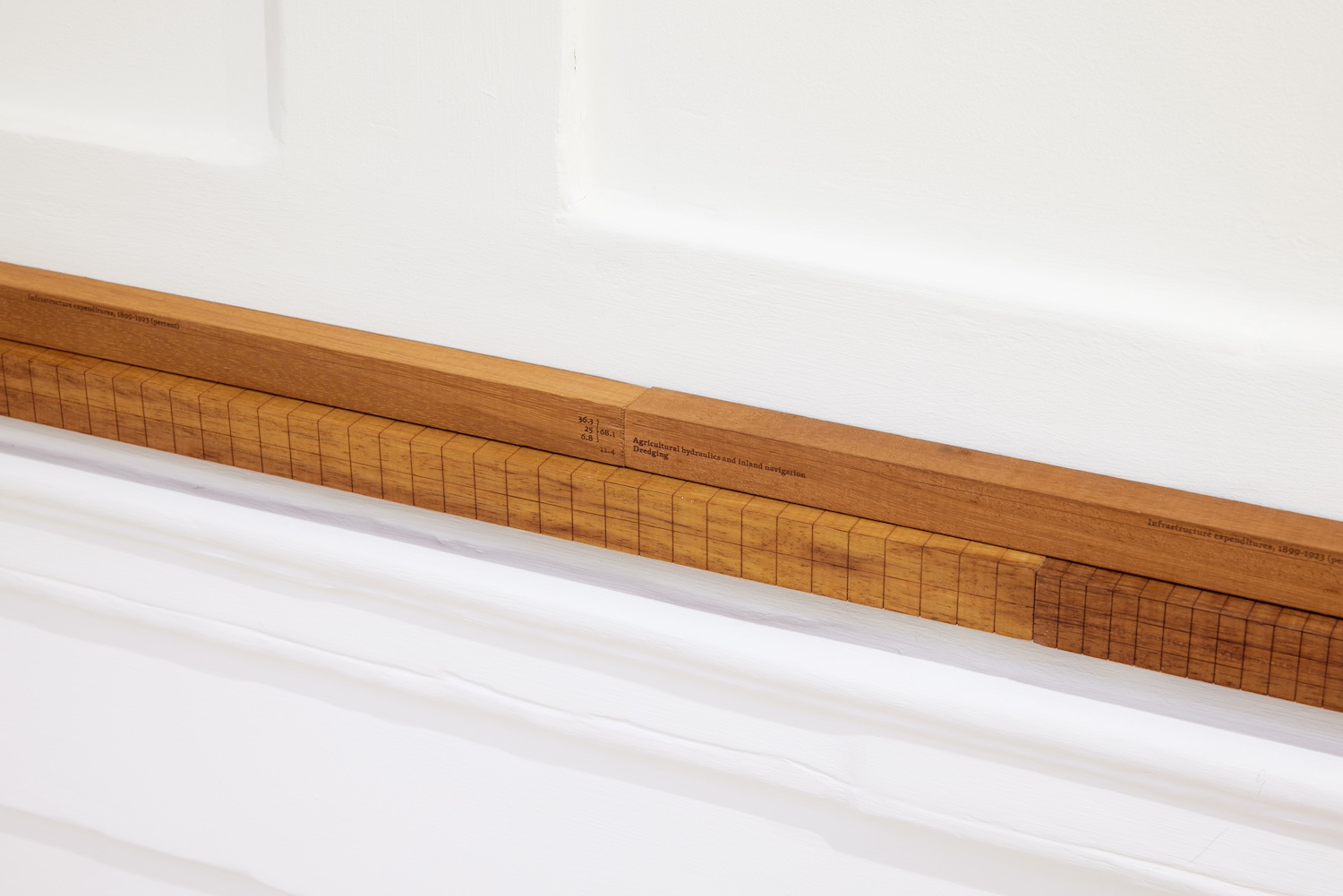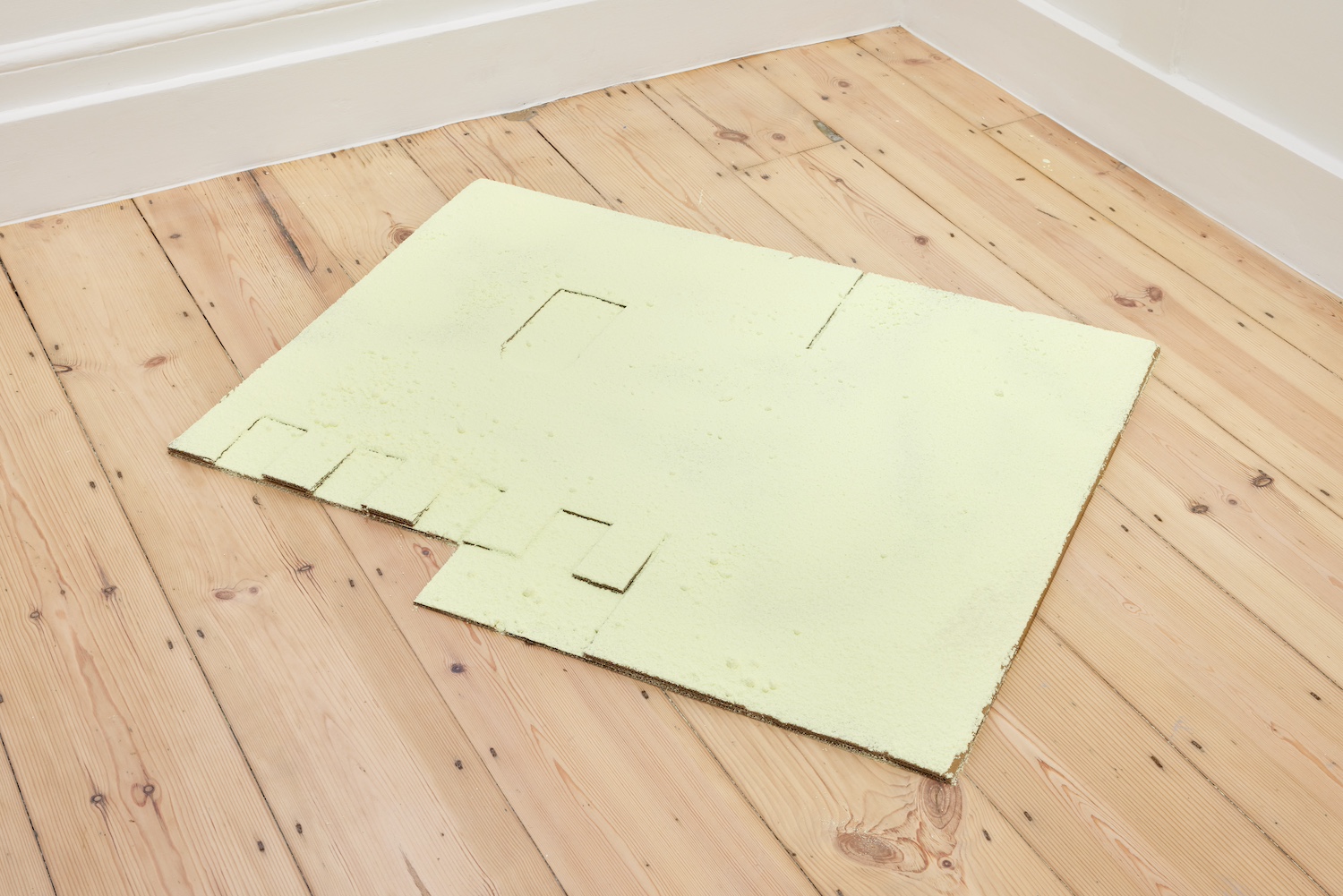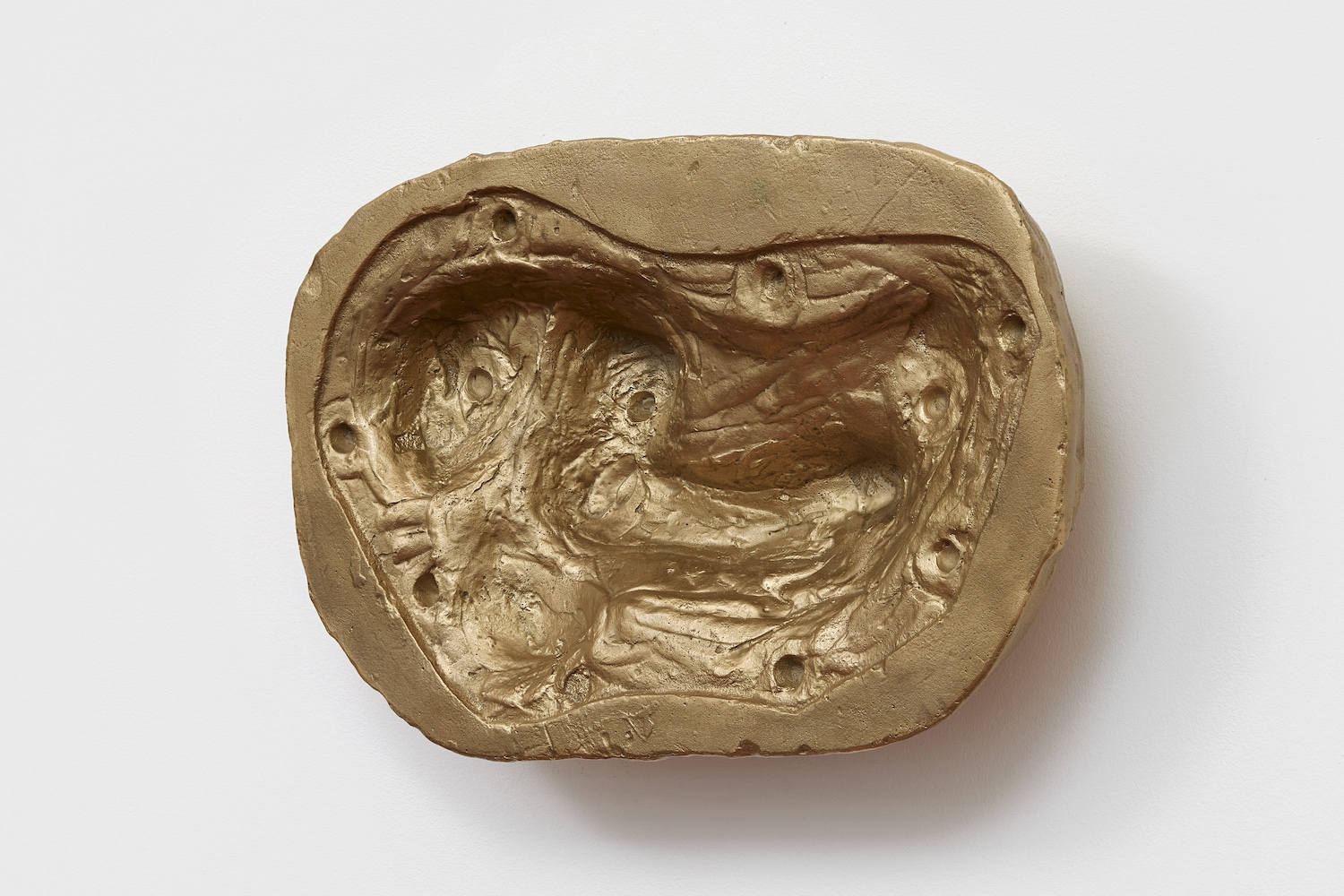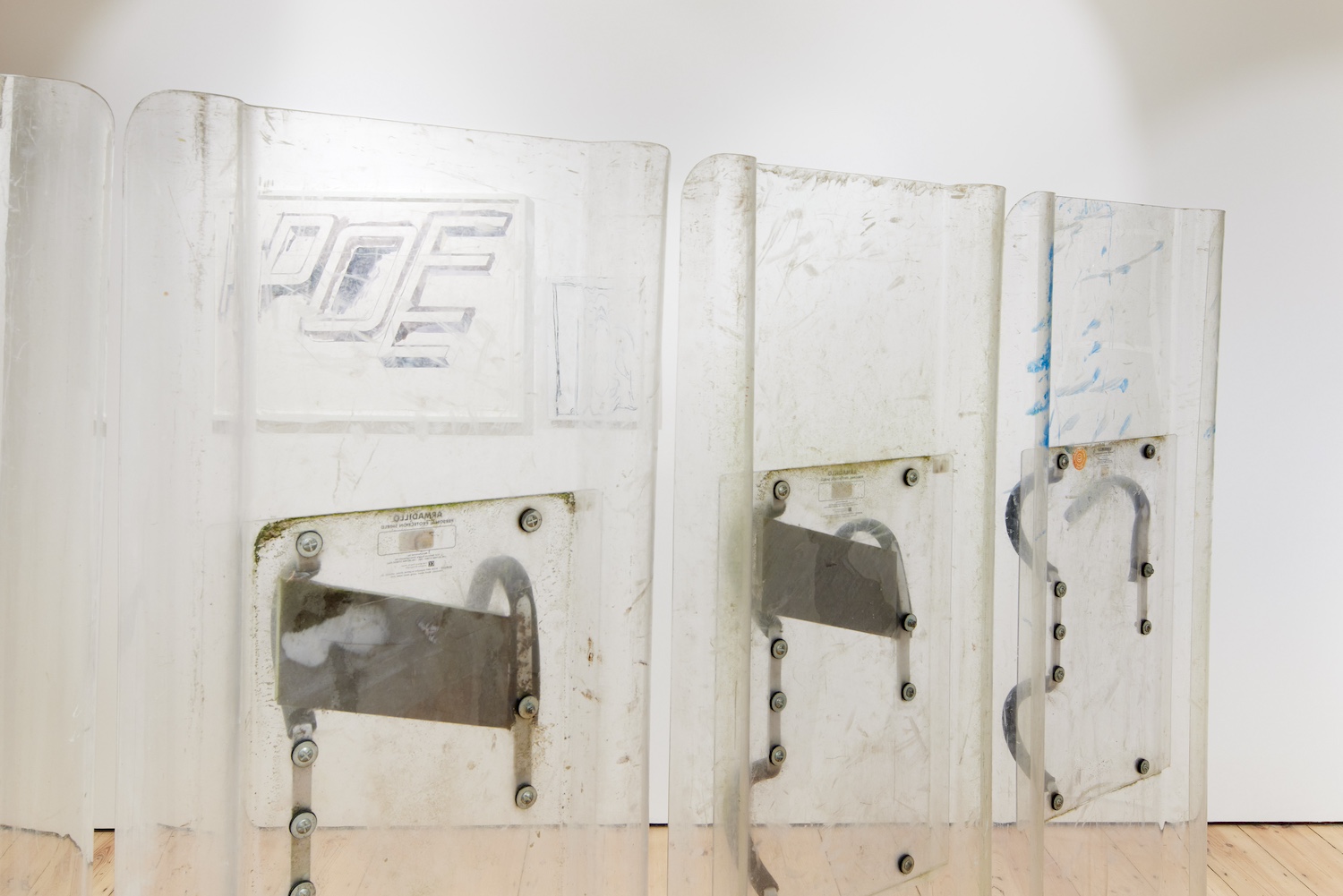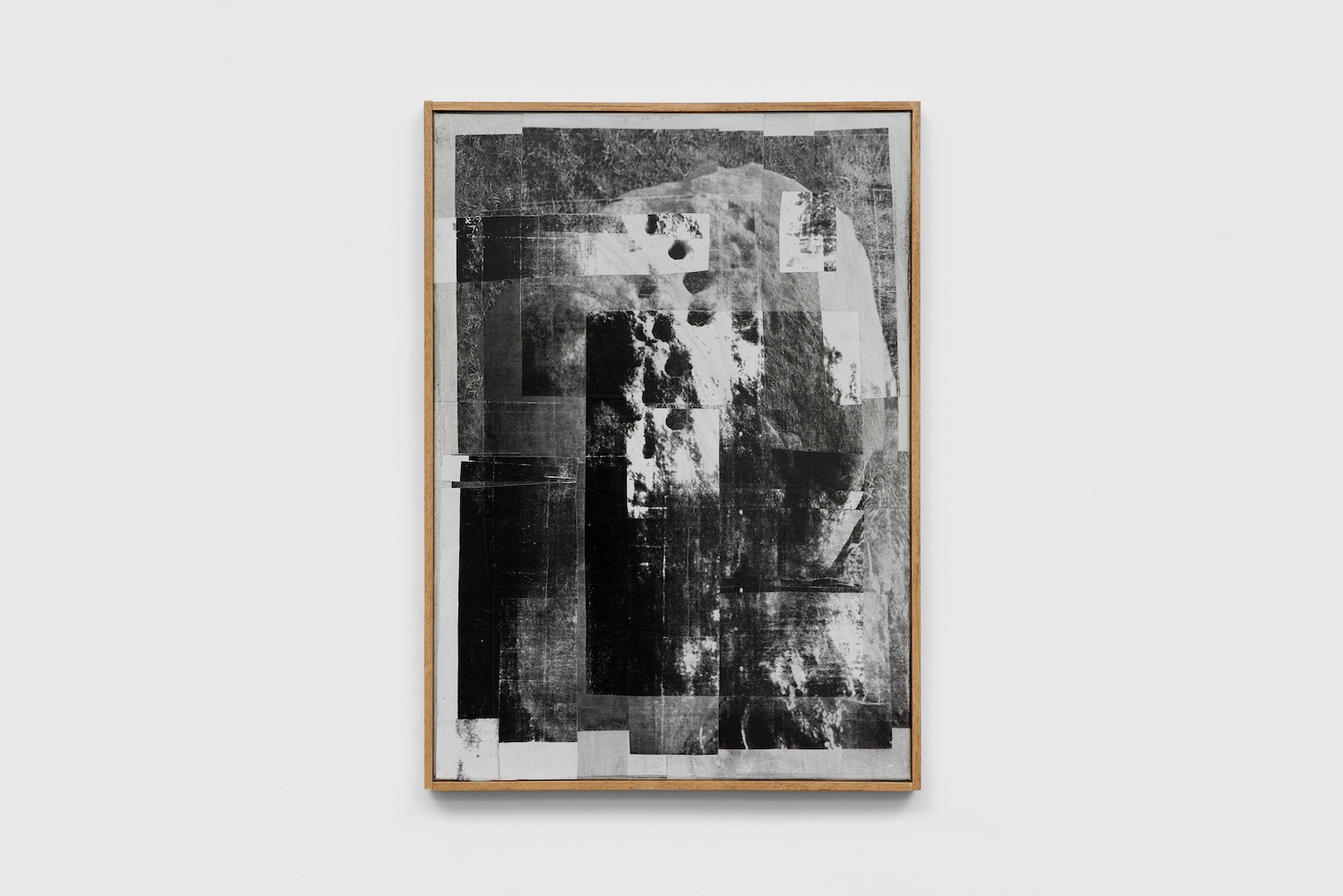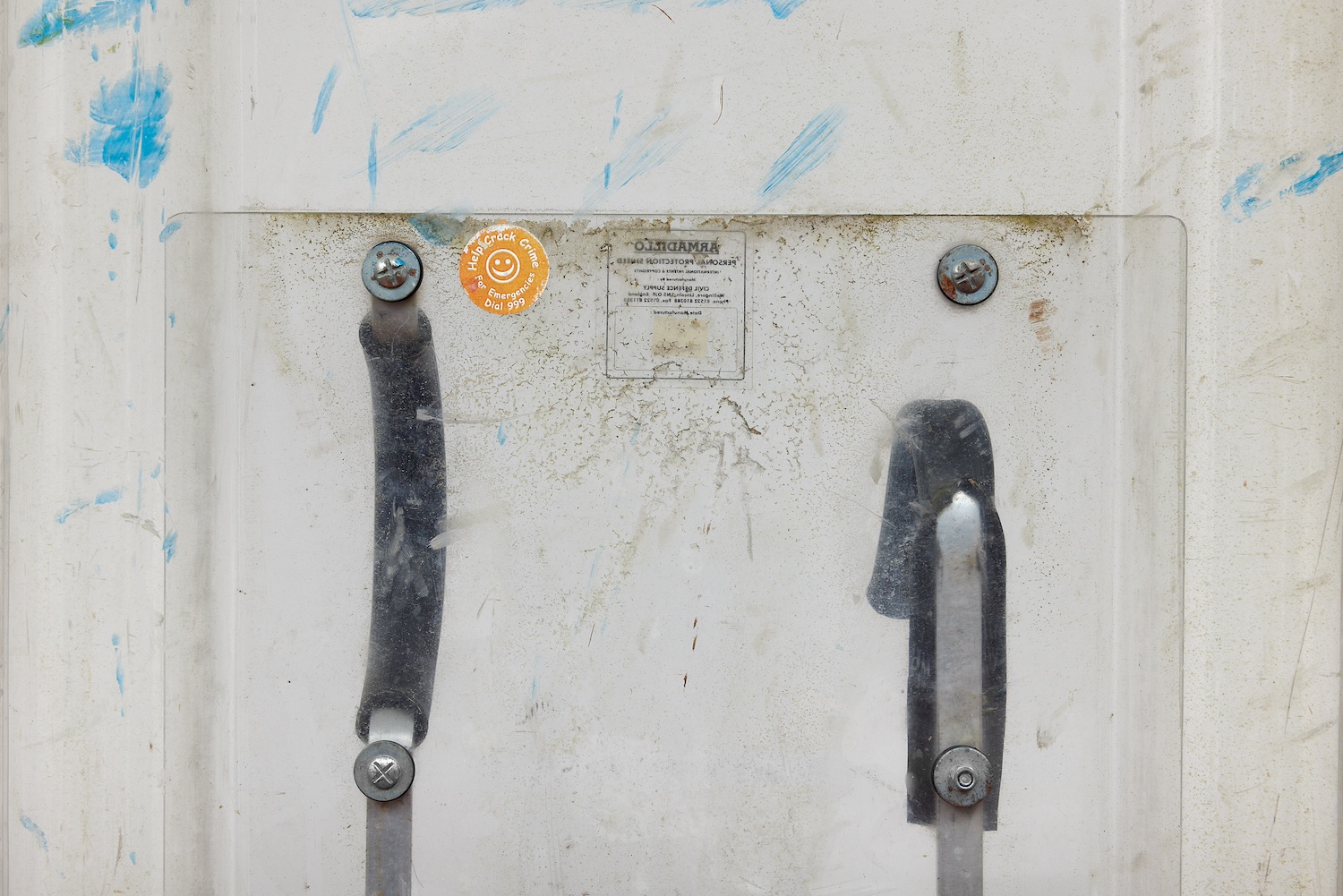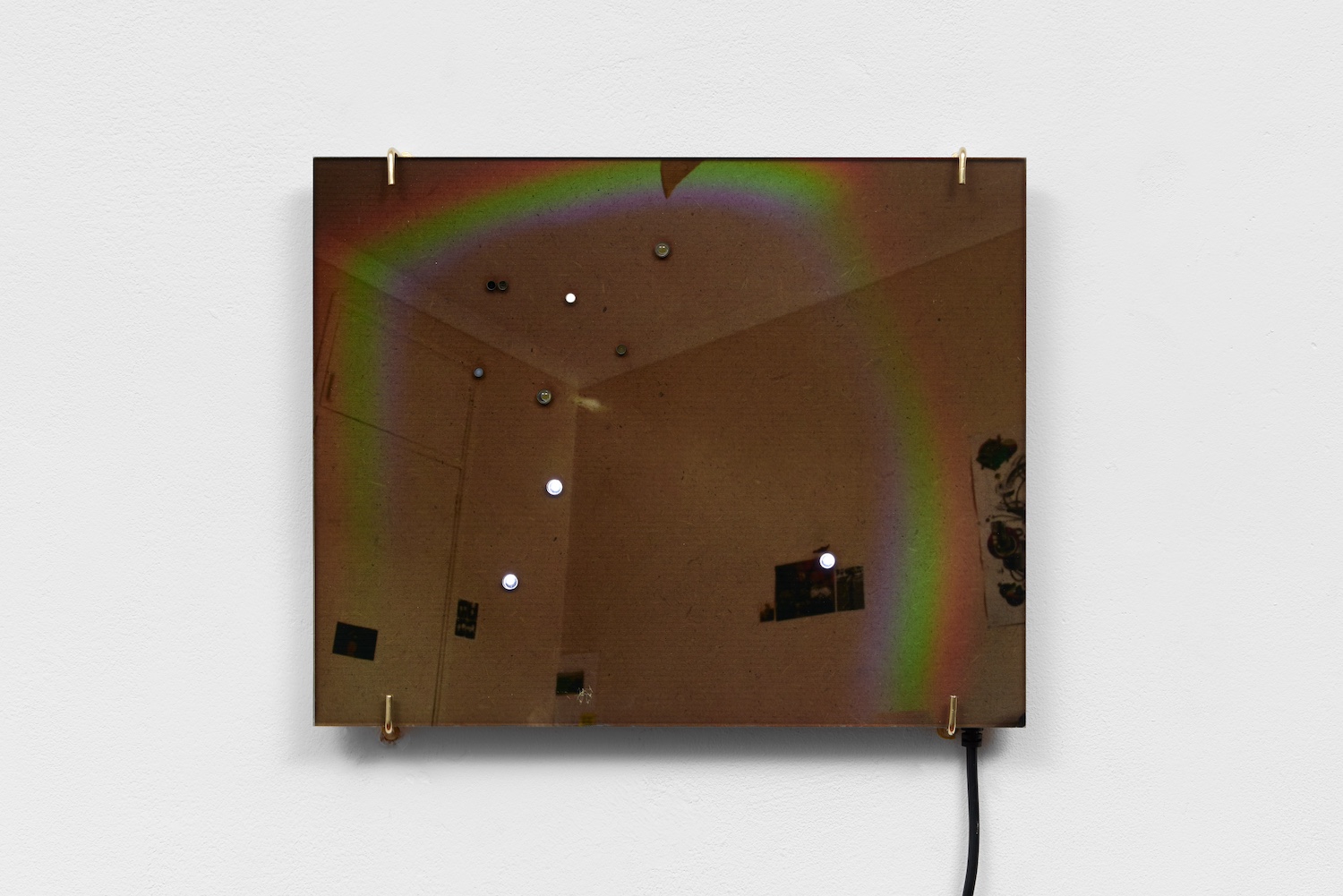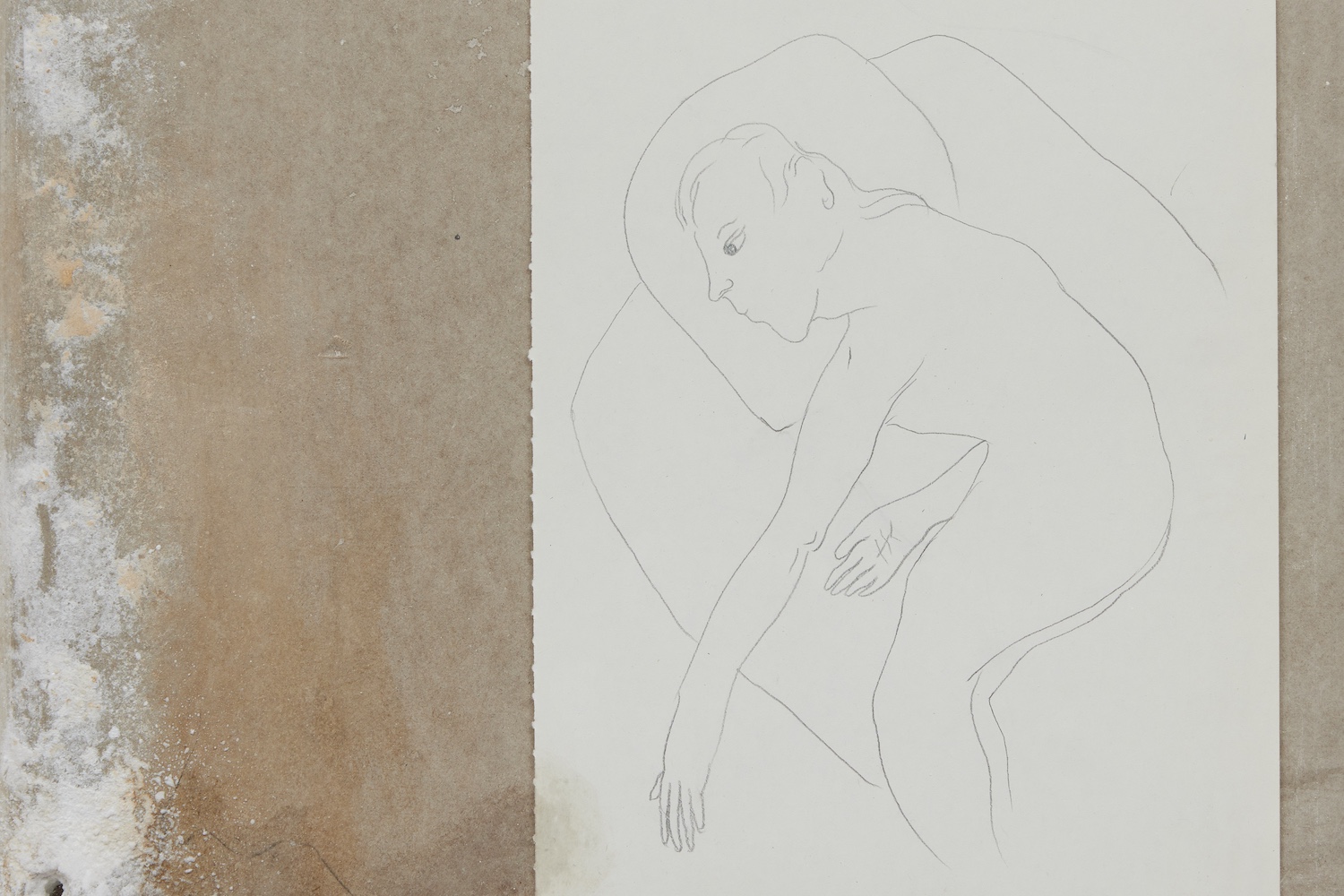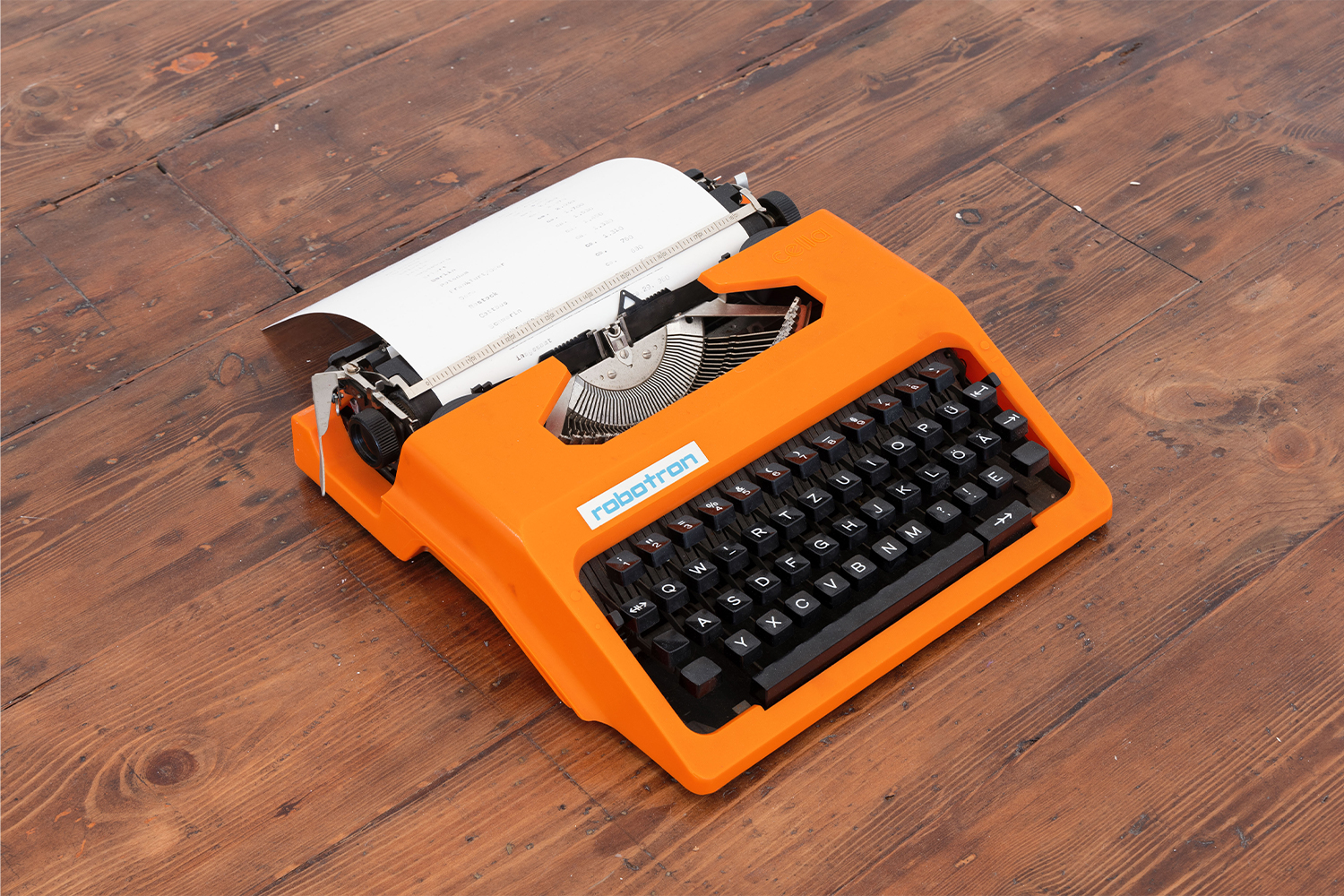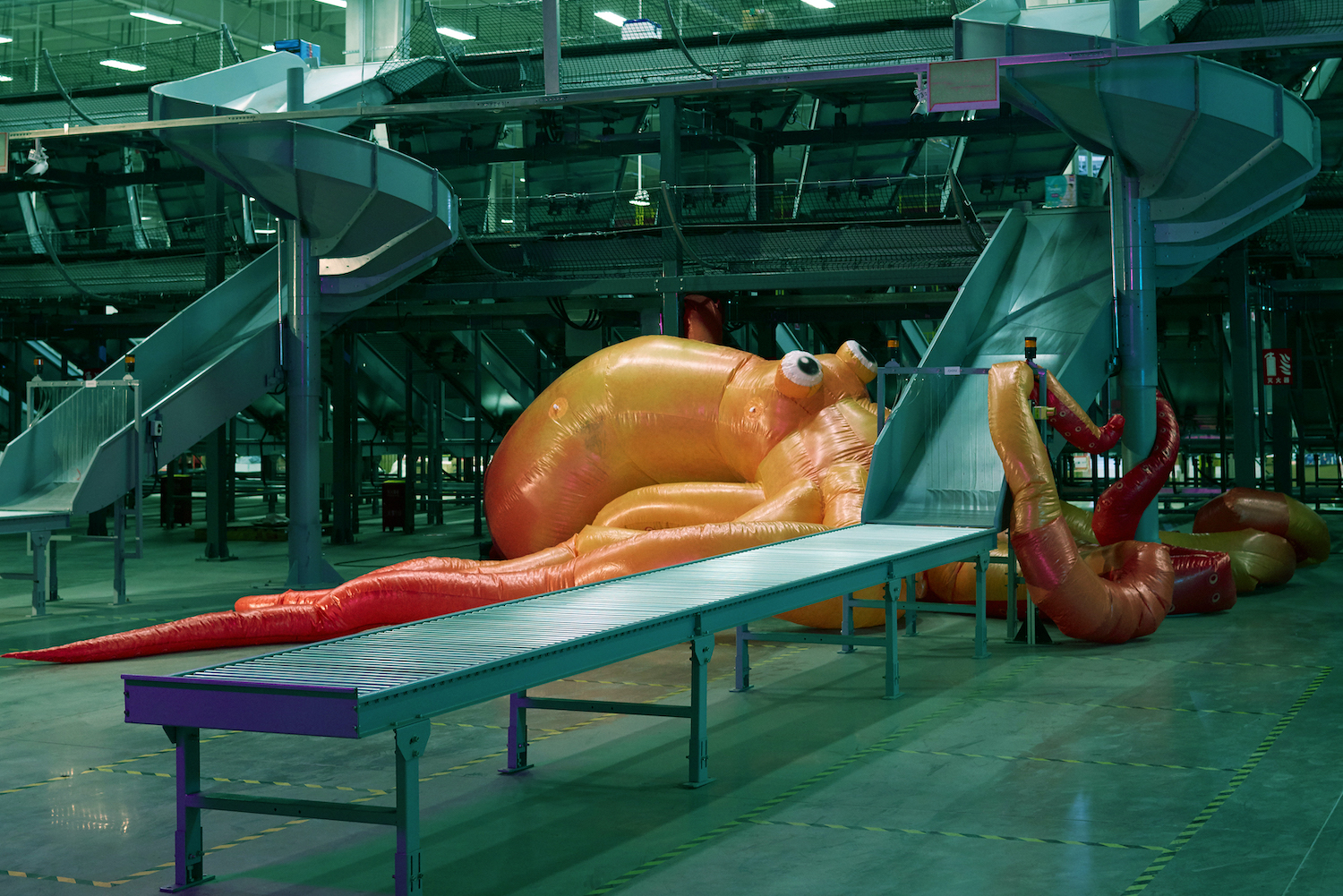Emalin began as an itinerant gallery occupying abandoned buildings: a nineteenth-century Swiss schoolhouse, a Milanese office complex, a baroque church in Naples. Having established their London base in the light-filled upper stories of a one-time Victorian department store, they have now opened a second location in the oldest building in Shoreditch: the Clerk’s House at 118½ Shoreditch High Street.
In-betweenness is intrinsic to the building’s material reality. Renovated by Giles Reid architects, with Georgian paneling restored, the building’s sixteenth-century front door also remains. Today, that door is talismanic due to the not-quite-verified fact that Shakespeare, who worshipped at the neighboring church, may have passed through it.
The inside of that heavy dark door has been whitewashed. For contemporary art spaces this comes as no surprise, but here echoes the sixteenth-century Reformation when walls were whitewashed to cover Catholic iconography and usher in a new spiritual and political order. Antithetical to destructive intent, the whitewash’s lime compound helped to preserve what lay beneath. One order was not eradicated and replaced by another; they co-existed intimately, one merely resting on the other. Emalin’s twenty-first-century white walls are not iconoclastic but announce the site as accommodating, actively poised betwixt the spiritual and the secular, the past and the contemporary, the contemporary and its own contemporaneous conflicts. The inaugural group show, titled “118½,” has fifteen multidisciplinary artists converse with the site’s lively antagonisms and affordances.
Upon entering, we first meet Adriano Costa’s “The Cemetery Series” (2022): five bronze sculptures, casts of casts, which toy with the notion of the cast as dead material, shedded skin. These bronze-casts-cast-in-bronze confuse the topological borders of life/death, body/prosthesis, value/waste, reveling in Shakespearean paradox. Some works in the series are casts of old sculptures now granted a second life as their inversion – two negatives making a positive. This push-and-pull of opposition continues in Ceidra Moon Murphy’s Qualified Immunity (2024): a line of police shields displayed in the round, enabling viewers to experience both “sides.” Framed by law-enforcement as defense against rioters, training programs encourage use of shields to intimidate and attack. Protests — actions to defend human and planetary rights (against the systems that are meant to protect them) — mirror this two-sided dynamic.
Upstairs, Nicholas Cheveldave’s photo-collage Sharing Is Caring (2022) uses found images to explore folk practices of mutual aid. Throughout seventeenth-century England, plague stones occupied parish borders, functioning as points of commerce: the sick placed coins in vinegar-filled hollows, whilst the healthy placed goods. In Matthew Peers’s Wishing Wells (2023), which sit on the gallery’s roof, three photographic developing trays collect rainwater, reflections, and coins. These coins have no exchange value but participate in the folkloric ritual of gifts offered for wishes granted.
Sung Tieu’s The Ruling (2023) interrogates the transition from folk practices to empirical systems, the result of colonial, bureaucratic, and administrative governance schemes operating under the guise of universal regulation. Two ruling sticks etched with economic data explore how, under French Rule, the ancient Vietnamese unit xích (used to measure land) was replaced by the European meter. Metrication profoundly impacted land taxation, forcing many Vietnamese farmers from their lands. As Polish historian Witold Kula wrote in Measures and Men (1986), ancient measurements were linked to the body: “Traditional measures were ‘human’ in many respects […] expressive of man and his work.” Metrication thus forced yet more dispossessions; from cosmology, body, and labor.
Attempting to reunite the body with its labor, Matt Browning’s art practice is intentionally constrained by income, the measurements of his studio, and available materials. Plastic Freedom (2022), two small gleaming convex squares made from discarded plastic bottles collected by the artist, takes its name from a talk by Marxist art historian Meyer Schapiro. In Social Bases of Art (1936), Schapiro lamented how artistic patronage was confined to leisure classes and artists had grown detached from social concerns. These conditions however granted a new “plastic freedom” and “joy in transforming the shapes of familiar things” (like found plastic bottles into art objects). Schapiro proposed that artists “ask the same questions that are asked by the impoverished masses and oppressed minorities.” Browning’s scrap collecting and economic reuse of “poor materials” might encourage false connections between artists and rag-pickers, connections that Browning acknowledges tend to whitewash very tangible socio-economic disparities. Again, Shakespearean paradoxes stir in material form.
Before Emalin, a thirty-year-derelict Clerk’s House accrued dust, water damage, and market value. The decision of Emalin’s founders, Angelina Volk and Leopold Thun, to enliven the space participates in the seemingly contradictory cultural Geist of new gallery openings across the city: a surge of creative ingenuity rubs against growing poverty and homelessness. These extremes are acknowledged in Emalin’s curatorial reckoning with contiguous economies of material flow and the implicated body. Bringing into interrelation a diversity of artists and practices, the works in “118½” reveal how things as abstract and apparently idiosyncratic as a metric, or a wish, have the potential to enforce, or enable, material change.

